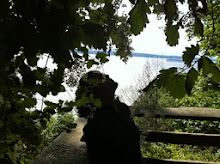Goa of the sea

for whatever we lose (like a you or a me)
it's always ourselves we find in the sea
-e.e. cummings

In every outthrust headland, in every curving beach, in every grain of sand there is the story of the earth.
-Rachel Carson.
And more beaches

where everyone has to be!
Goa of the sunsets

A beautiful sunset that was mistaken for a dawn.
-Claude Debuss
Goa of the Churches

and their equally ancient companions, the beautiful rain trees.
Goa of the old houses

waiting to be torn down and rebuilt as grotesque multi-coloured, perhaps 'neo-Mediterranean' styled, high rise apartments.
Goa of the rivers and the green hills beyond

and a constant to and fro of barges carrying iron ore.
Goa of the Banyan tree

To study a banyan tree, you not only must know its main stem in its own soil, but you must trace the growth of its greatness in the further soil. Only then can you know the true nature of its vitality.
-Rabindranath Tagore
Interestingly, Tagore was comparing Indian civilization to the banyan tree. With every square foot of land being mined for money, I wonder how many banyan trees are being planted now. And what does that say about the 'vitality' of our civilization.
Goa of the birds

There is nothing in which the birds differ more from man than the way in which they can build and yet leave a landscape as it was before.
-Robert Lynd





























